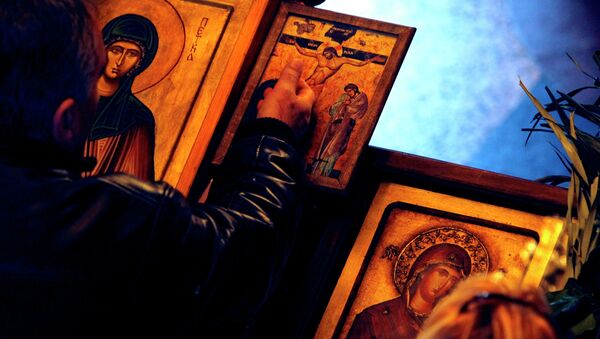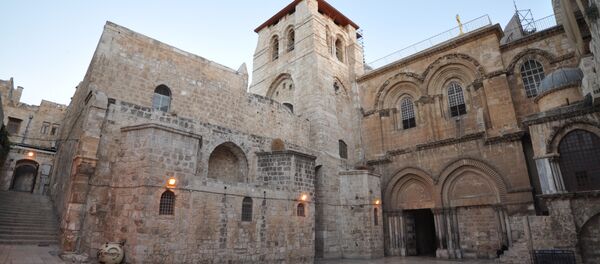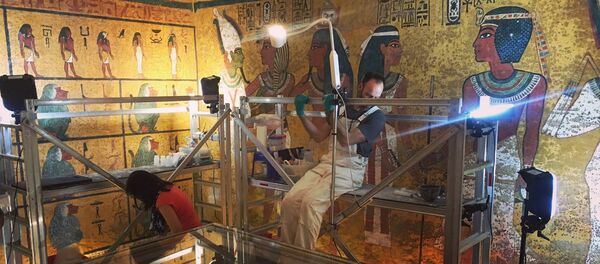"Icons are not commercial objects for us, but holy images that we honor," said Nicola Juha, who heads the Bethlehem Icon Center. He claims his group to be part of a tradition stretching back as far as 60 AD, where Luke the Evangelist (he of the Gospel of Luke) supposedly painted the first icons of the Virgin Mary and a young Christ.
The icons are made to order, using animal hair brushes from Jerusalem or London and pigments exclusively from the Holy Land, such as yellow stones from the ancient city of Jericho. Each one is blessed by the Melkite Greek Catholic Church.
"Icons have always fascinating me, and more and more so in the last few years, because they are a kind of beautiful synthesis of God, prayer and also ecology in the way that the pigments are all taken from nature," said Rose Codneler, a British woman vacationing in Bethlehem for Easter.
She calls the art "a way of getting deeper into the characters of the Bible and the story of the Bible."
Ian Knowles, a Briton, serves as a teacher and community leader to the Christian artisans. "I wanted to do something which could really help to rebuild the iconography as a proper tradition and a constituent part of the Christian community here," he said.
"I think people know the Christian population in Bethlehem has been devastated over the last 50 years."
Over the last century, Palestinian Christians have fled the Holy Land, and theirs numbers have fallen from 9.5 percent of the population in 1922 to less than 2 percent today.
Bethlehem is a city in the Palestinian Territories, and while the biblical birthplace of Jesus is now predominantly Muslim it also has a sizable Christian minority. Christian tourism to Bethlehem makes up the majority of the town's economy.




